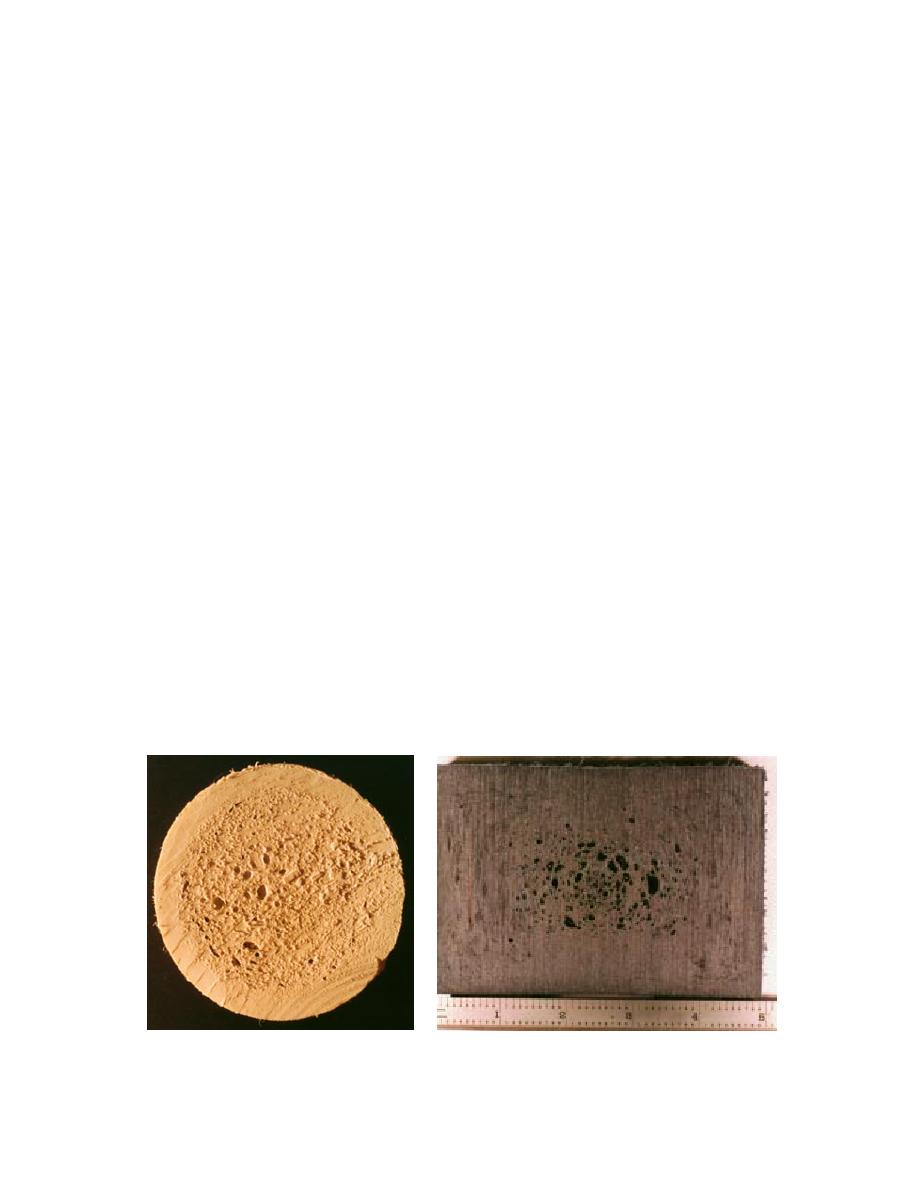
CHAPTER 4: RECYCLED PLASTIC COMPOSITE GUARDRAIL POSTS
Commercial production of synthetic lumber
carded into the solid waste stream (Miller and
from recycled plastics has been reported both in
Johnson 1989), and because plastic wastes occupy
the U.S. and abroad. Many of these recycled plas-
more volume than other solid wastes, it is esti-
mated that thermoplastic solid waste will occupy
tics are mixed with other ingredients, forming
about 80% of the available space. As a result, the
composites, and are being marketed as structural
recycling of plastics is gaining momentum and
materials. The thrust of the research presented
the uses of re-formed plastics are proliferating.
here is a study of the mechanical characteristics
A potentially large volume application of recycled
of one such recycled plastic composite (RPC),
plastics in guardrail applications will help the
which appears to have the potential for applica-
national plastic waste recycling effort. Second,
tion as the guardrail posts and blockouts.
existing creosote treated wooden guardrail posts
Guardrail system designs rely primarily on the
are not favored by many environmentalists,
soil bearing capacity to yield to impact, but the
because of the potential danger of groundwater
posts provide enough restraining force to redi-
contamination by leached creosote. Such dangers
rect errant vehicles. Typical wooden posts made
will be minimized if the substitution of wooden
from Douglas fir, hemlock, etc., have a rupture
posts and blockouts by RPC becomes possible.
strength (equivalent to the stress at which the
In addition, the availability of lumber through-
fibers will fail in tension under bending load) that
out the world is greatly diminishing as a result of
varies from 41.34 MPa to 82.68 MPa (6000 to
a significant international effort to preserve the
12,000 psi) and a modulus of elasticity of from
8.96 GPa to 13.78 GPa (1.3 l06 to 2 l06 psi). To
rain forests. An alternative material like RPC for
guardrails will reduce the demand on the pres-
develop enough restraining force to redirect errant
sure-treated lumber supply.
vehicles, the impact response characteristics of an
RPC post system would need to be in the same
range as those of a wooden post.
Initial survey and
There are two attractive features that favor con-
material identification
When this study was initiated, a survey of
sideration of recycled plastic composites (RPC)
the U.S. marketplace showed that recycled,
for highway structures. Both these features relate
mixed plastics were being used for noncritical
to the overall improvement of the quality of our
load-bearing applications such as park benches,
environment. First, as landfill space becomes
picnic tables, fences, curbs, parking blocks, etc.
increasingly scarce, the satisfactory disposal of
However, it was noticed that a large percentage
solid waste is becoming a critical issue. By the
of this "plastic lumber" contained cavities (Fig.
turn of the century, an estimated 37 billion kg (80
37) in the central region of the cross section. The
billion lb) of thermoplastic waste will be dis-
a. Manufacturer A.
b. Manufacturer B.
Figure 37. Commercial plastic lumber containing cavities in the core area of the section.
26



 Previous Page
Previous Page
